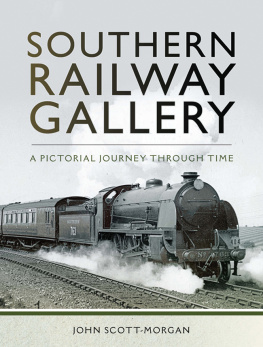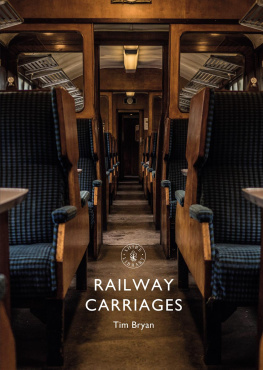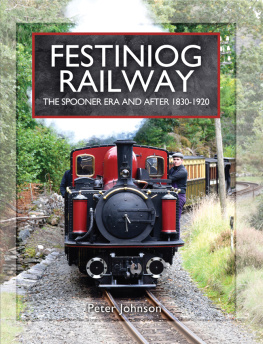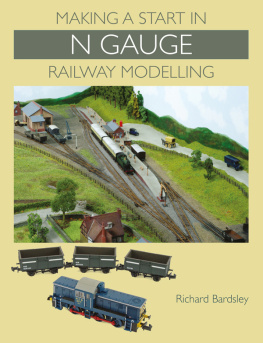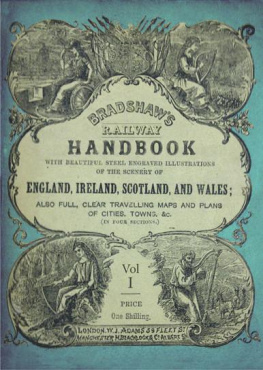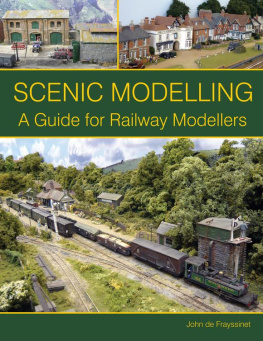

In memory of Colin George Bright,
5 November 1954 27April 2013.
A good friend, professional railwayman and
lifelong transport enthusiast.
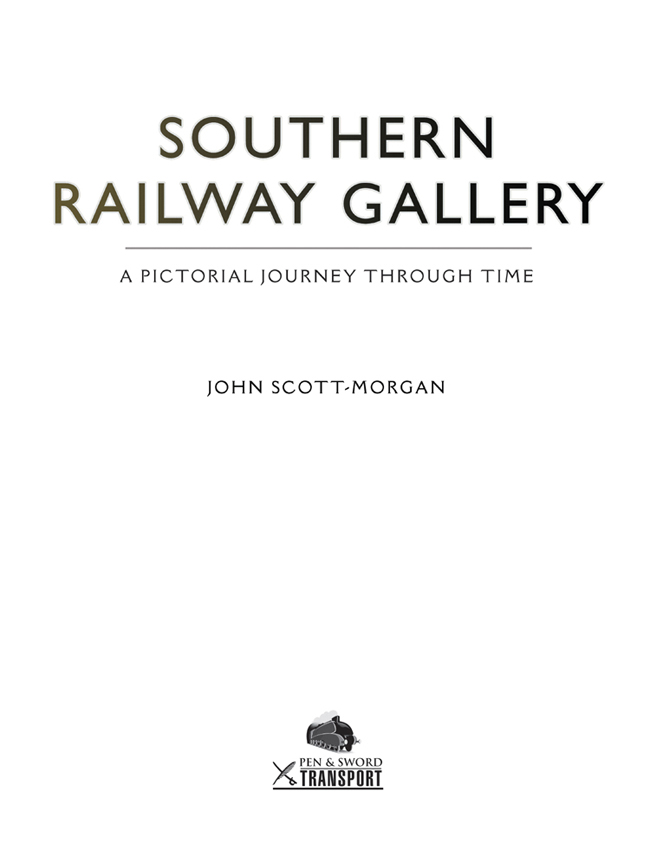
First published in Great Britain in 2017 by
Pen & Sword Transport
An imprint of Pen & Sword Books Ltd
47 Church Street, Barnsley South Yorkshire S70 2AS
Copyright John Scott Morgan 2017
The right of John Scott Morgan to be identified as the author of this work has been asserted by him in accordance with the Copyright, Designs and Patents Act 1988. All rights reserved. No part of this publication may be reproduced or transmitted in any form or by any means, electronic or mechanical, including photocopy, recording or any information storage and retrieval system, without the prior written permission of the publisher, nor by way of trade or otherwise shall it be lent, re-sold, hired out or otherwise circulated without the publishers prior consent in any form of binding or cover other than that in which it is published and without a similar condition including this condition being imposed on the subsequent purchaser.
ISBN 9781473855793
eISBN 9781473855809
Mobi ISBN 9781473855816
Pen & Sword Books Ltd incorporates the imprints of Pen & Sword Archaeology, Atlas, Aviation, Battleground, Discovery, Family History, History, Maritime, Military, Naval, Politics, Railways, Select, Social History, Transport, True Crime, and Claymore Press, Frontline Books, Leo Cooper, Praetorian Press, Remember When, Seaforth Publishing and Wharncliffe.
For a complete list of Pen & Sword titles please contact
Pen & Sword Books Limited
47 Church Street, Barnsley, South Yorkshire, S70 2AS, England
E-mail:
Website: www.pen-and-sword.co.uk
INTRODUCTION
T he Southern Railway was the smallest of the big four railways, that came into being on the 1 January 1923. The grouping of Britains railways caused a lot of anxiety among the officers and staff of the various companies concerned, where old rivalries and distrust between companies often continued into the new era of the amalgamated big four.
The Southern Railway was made up of four main companies:
The London & South Western operated from Waterloo to Portsmouth via Guildford, with a main line that also linked the capital with Weymouth via Southampton and Bournemouth. A large part of the L&SWR was in the West Country, serving Somerset, Dorset, Devon and North Cornwall, a long way from the bustling metropolis of London or the rolling hills of Hampshire. It was to all intents and purposes the senior partner in the Southern group, having some of the most prestigious trains and most up to date motive power. It had already started to electrify its London suburban network in 1915, using a DC third rail system, with the line from Waterloo to Wimbledon via Putney.
The London Brighton & South Coast Railway, on the other hand, operated a more sedate network, running out of London Bridge and Victoria to places in Surrey, East and West Sussex, parts of western Kent and parts of east Hampshire. Like the L&SWR, the LB&SCR also had a good modern fleet of express Locomotives, some fine carriage stock and a wellmaintained fleet of freight vehicles. It was also slowly introducing electrification on its London suburban lines with the operation of an AC overhead system on the South London line from London Bridge to Victoria, which the company intended to extend to Crystal Palace and eventually the main line to Brighton.
The weakest links in the main line railways taken into the new Southern group was in the form of the South Eastern Railway and the London Chatham & Dover Railway, which had formed a joint management committee in 1899, in order to end the negative rivalry that had existed between the two companies since the Victorian era. The Southern Railway had to negotiate two separate agreements with the companies concerned, in order to take over them both.
The South Eastern & Chatham Railway Joint Committee operated railways in Kent and along the East Sussex border, serving the towns along the Medway, the Channel ports of Dover and Folkestone and the holiday destinations in Thanet and the East Sussex coast from Rye to Hastings. It served the East Kent coal field and also the cement industry in North Kent, which provided the railway with through freight traffic to other main line railways via London and its Tonbridge to Reading line. It was planning to electrify its South London suburban network, at the time of the 1923 grouping, however the company planned to use a different system of DC third rail pick up to that of the L&SWR, with its conductor rails in a different position. As the SE&CR electrification project had not progressed by the time of the grouping, the newly formed Southern Railway was able to abandon the scheme and substitute it with the L&SWR third rail pick up system. The SE&CR was the church mouse in the Southern group, in that it was the least well off railway vested in the new company, with the least modern Locomotives and rolling stock.
The Southern Railway was, from very early on, a great believer and investor in electric traction, not only electrifying its London suburban services but also converting at an early stage much of its main line operations on the former Brighton system, electrifying the main line from Victoria and London Bridge to Brighton, Eastbourne and Hastings, all of which was achieved between 1933-1936.
On the former L&SWR, the company electrified the suburban network in South West London and out as far as Alton in 1935, continuing with the main line electrification of the Portsmouth Direct in 1937. There were plans in the late 1930s, to electrify the main line network in Kent, but the Second World War intervened, curtailing these plans until British Railways days, in the late 1950s and early 1960s.
All four railways brought shipping companies to the Southern group, which were vested in the Channel Packet Company, the Southerns shipping company. Along with the railways themselves, the newly formed Southern Railway, inherited a number of docks and harbours, from the Kent coast to North Devon and Cornwall.
In addition to the main line constituents, the Southern also took over some interesting small railways: the Plymouth Devonport & South Western Junction Railway, which operated an independent line between Bere Alston and Callington, with running rights to Plymouth; and the narrow gauge Lynton & Barnstaple Light Railway, in North Devon. In truth, one could say that the Lynton & Barnstaple Light Railway, was a missed opportunity, in that, unlike the Great Western, who made the most of owning the Vail of Rheidol Light Railway in mid Wales, the Southern never really understood this little gem of a railway, which could have made a tidy profit for the company from tourist traffic, had it been properly advertised and promoted.
An interesting development in North Devon and Cornwall at this time was the construction and opening in 1925 of the North Devon & Cornwall Junction Railway, a line from Halwill Junction to Torrington, which connected two important Ex L&SWR routes, at the far end of the Southern system. The ND&CJR, was always an independent railway, with a separate management based in an office in London, at Waterloo station; it was not taken over until nationalisation in 1948, when it became part of the Southern Region of British Railways, the chief Engineer for the project being Colonel Holman Fred Stephens, the famous light railway Engineer and railway administrator.
Next page
